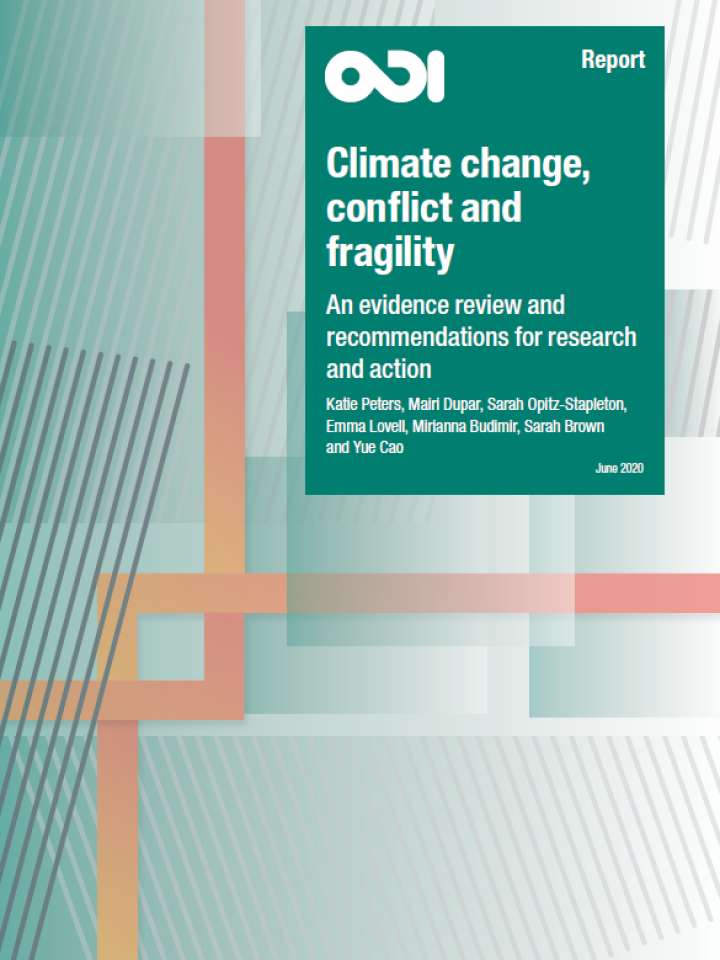Climate change, conflict and fragility: an evidence review and recommendations for research and action
This report looks at the evidence on the links between violent conflict and climate-related hazards, disasters and natural resources. It explores the relationship between conflict and short-term, extreme weather events (such as tropical storms), and other natural disasters (such as earthquakes) that can trigger humanitarian disasters. It also considers slow-onset and long-term changes in natural resources related to the climate (such as drought and land degradation), their impacts on people and livelihoods, and the incidence of violent conflict.
The relationships between climate factors, natural resource scarcity and conflict point to a need to integrate stabilisation and peacebuilding principles with climate-resilient development interventions at local and sub-regional levels. The answer is not ‘more arms’, but the patient and intentional fusion of environmental protection and restoration work with conflict resolution and the cultivation of economic and political stability. The evidence suggests six priorities for action to guide the development investments of national governments, funding agencies and international and multilateral development organisations (p. 8):
- Keep average global temperature rise as low as possible, to limit the damage caused to land, water, oceans and related ecosystems by climate change.
- Given the noticeable negative impacts climate change is having on land- and ocean-based ecosystems, adapting to climate change and building climate resilience is vital.
- Climate change is among the drivers of biodiversity loss and ecosystem degradation, but direct changes to land and sea by humans (such as over-fishing and deforestation) play a greater role.
- Violent conflict strips individuals and communities of their lives and dignity, and many of the basic elements of development.
- Dealing with both sudden- and slow-onset climate- and hazard-related disaster risk requires functioning and effective climate and disaster risk management systems, institutions and capacities.
- Poorly designed climate change adaptation and mitigation programmes have the potential to exacerbate inequalities in communities and create greater frictions – with social tensions and even the potential for small-scale armed violence.
Explore further
